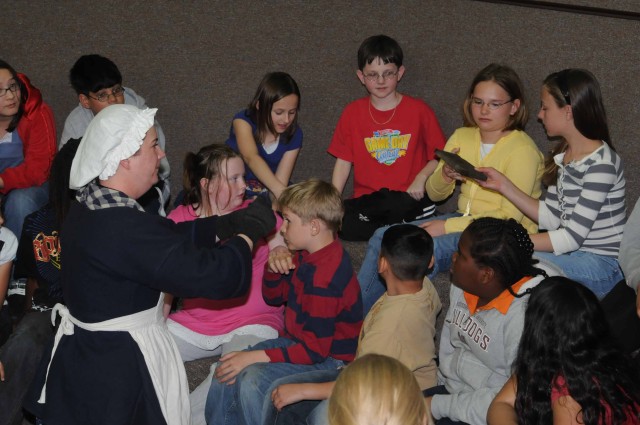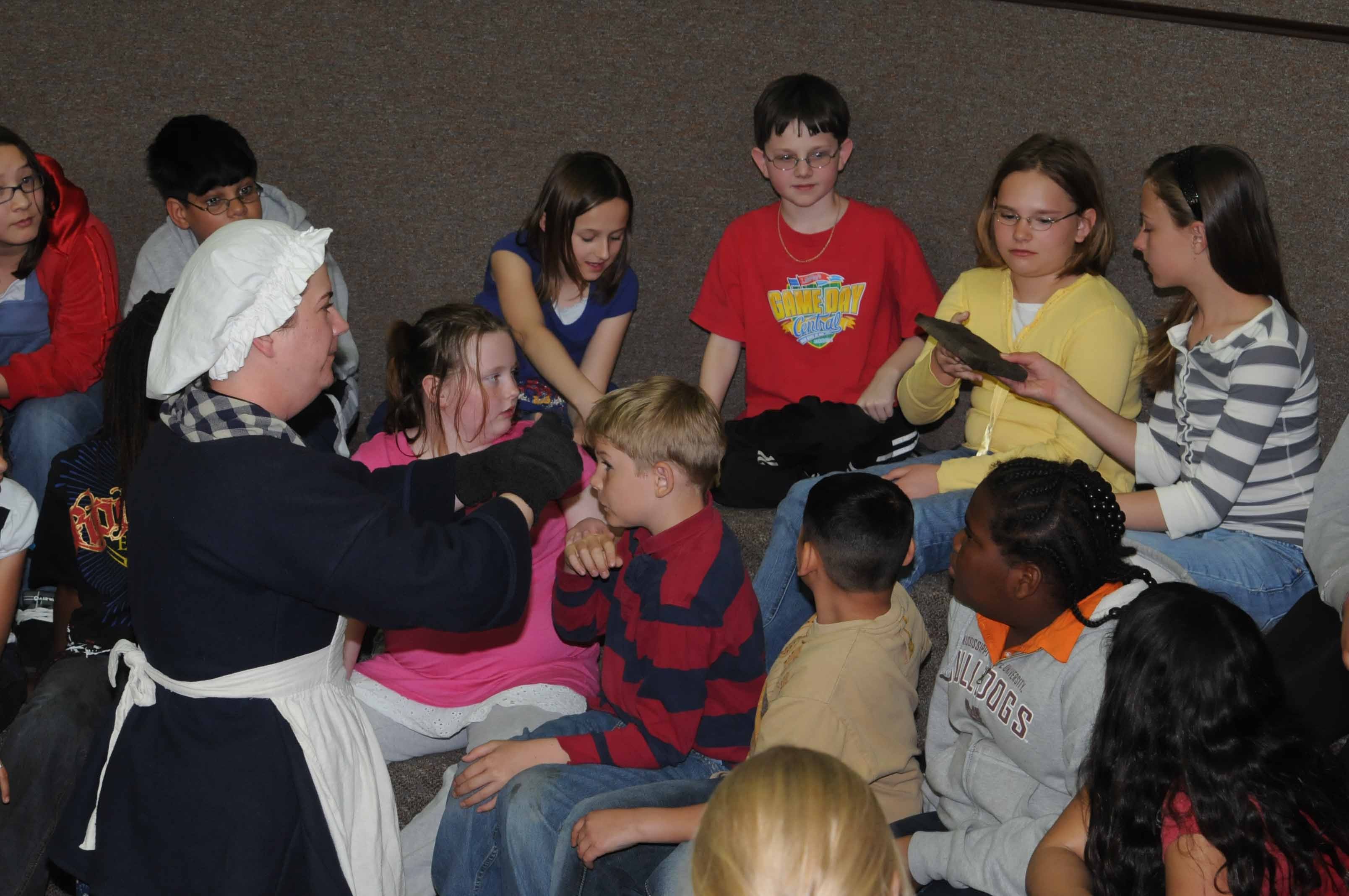FORT RILEY, Kan. - Gary Groh slowly moved his ramrod up and down the barrel of his flintlock rifle, describing just how much work was involved in getting his weapon ready to fire during the American Revolutionary War. About 40 fifth-grade students from Ware Elementary School were his audience, asking him about his strange clothing and long rifle.
Groh is a retired Army first sergeant who served his last tour at Fort Riley with the "Big Red One." He's also president of the Manhattan Konza Prairie chapter of Sons of the American Revolution. Groh and two other members of the reenactment group made history come alive for the students April 15 in the school's library.
Groh uses a personal approach to teaching history. Five of his ancestors fought on the American side during the war nearly 250 years ago. He came dressed as one ancestor, a frontier militiaman from northeast Tennessee. He wore a green, fringed hunting frock, leather moccasins, leggings, knee britches and a brown hunter's cap.
His relatives fought Cherokee Indians sympathetic to the British and Tories, American colonists loyal to the British side.
"We don't talk dates, times, documents and battles with the kids," Groh said. "I like to talk about what I'm wearing and what equipment I use."
The reenactors visit schools and youth organizations throughout the Central Flint Hills Region. Joining Groh for this visit was Cliff Malone, who portrayed a major in the Continental Army. He wore tan pants, white knee socks and a three corner hat. His blue and white jacket was topped with gold-braided epaulets. Malone described the formalities of 18th-century battle, and the courage it took to stand shoulder to shoulder with your fellow troops facing an enemy line a short distance away.
"This rifle is called a Brown Bess," Malone said, holding his rifle up for the kids to see. "And if you ran out of ammunition, you could just fix this long bayonet on the end and attack that way."
The group's third member was Susan Morton, portraying a midwife who treated wounded American troops. Morton wore clothing typical for a field nurse of that period, including a blue patterned skirt, dark blue jacket and white apron. A white bonnet covered her hair. She pulled out several items from a basket she carried, describing its purpose.
"In my harvesting basket, I carry the most powerful tools of my trade," Morton said. "My medicines would have included laudanum, morphine and opium. I have bandaging materials, cupping tools and a bleeding bowl."
Students were wide-eyed as Morton described how she would use now-primitive methods to help the wounded. It was common practice, she said, to help troops by cutting them, spilling blood impurities into a copper bowl she had tethered to her basket. Morton also talked about using a small heated cup to form blisters on their skin to help rid Soldiers of excess water that was believed to have caused their fevers.
"But in reality, I know that most of what I carry in this bag is going to do very little to alleviate the suffering of Soldiers," Morton said.
She told the students her most important tools were the last two items she pulled from her basket: her Bible and a quill writing pen.
"I do a lot of writing home for the Soldiers," Morton said. "If you were dying, I could tell your wife, at least, that you loved her. Some of these Soldiers were young men, so I could write to their mothers for them."
Morton also stepped out of character for a moment to say nurses like herself unknowingly spread infections on the battlefield through poor personal hygiene.
The reenactment group also passed around a small brick of dried green tea. As children took turns handling and sniffing the tea, the performers described how the British had heavily taxed the tea they sold to American colonists, prompting the Boston Tea Party. That part of the lesson was a timely message considering their school visit coincided with the day the students' parents were on deadline to file their income taxes.


Social Sharing